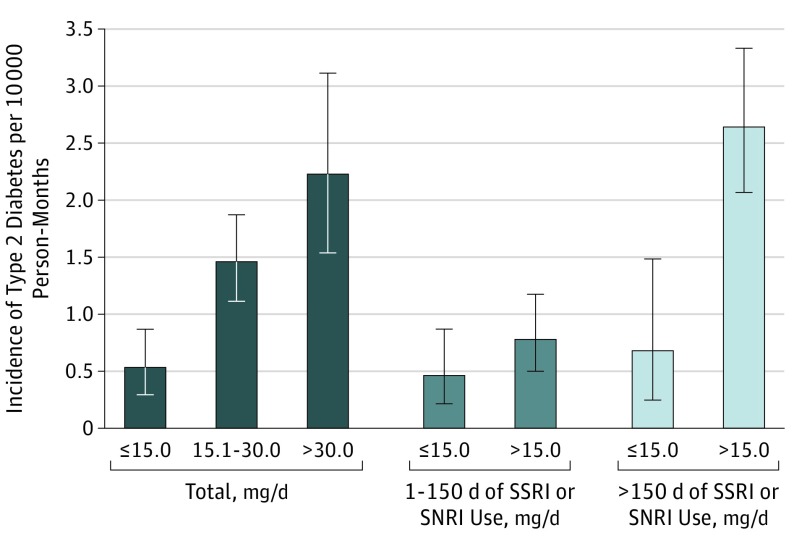Figure 2. Risk of Incident Type 2 Diabetes By Average Daily Dose According to Duration of Use Among Youths Insured by Medicaid (5-20 Years of Age) Who Were Current Users of SSRIs or SNRIs, 2005-2009.
The risk of type 2 diabetes increased significantly with the average daily dose (in fluoxetine hydrochloride dose equivalents), with a relative risk [RR] of 1.96 (95% CI, 1.05-3.64) for more than 30.0 mg/d and an RR of 1.83 (95% CI, 1.04-3.24) for 15.1 to 30.0 mg/d compared with 15.0 mg/d or less. For youths with 1 to 150 days of selective serotonin reuptake inhibitor (SSRI) or serotonin-norepinephrine reuptake inhibitor (SNRI) use, the average daily dose was not significantly associated with an increased risk of type 2 diabetes (RR, 1.22; 95% CI, 0.57-2.63). For youths with more than 150 days of SSRI or SNRI use, more than 15.0 mg/d was associated with a 2.39-fold (95% CI, 1.04- to 5.52-fold) increased risk of type 2 diabetes compared with 15.0 mg/d or less. Relative risk is adjusted for disease risk score (expressed as percentile ranks), time from cohort entry (ie, follow-up month), and exposures to tricyclic and other related cyclic antidepressants and other antidepressants. Error bars indicate 95% CIs.

